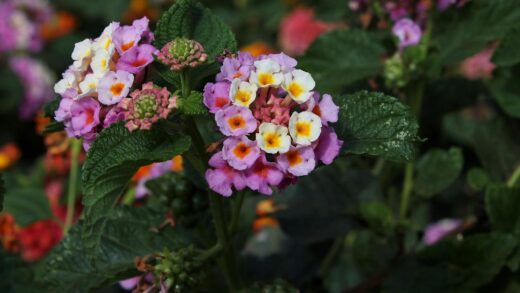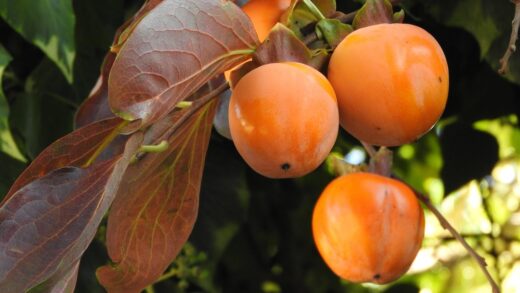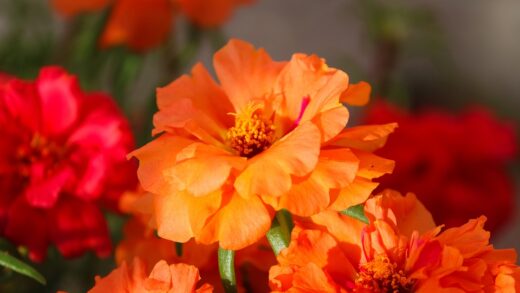Providing the appropriate amount of water is one of the most critical aspects of caring for Bidens ferulifolia, as its performance is directly tied to soil moisture levels. While this plant appreciates consistently moist soil, especially during its peak growing season, it is decidedly intolerant of waterlogged conditions which can quickly lead to fatal root rot. The goal is to strike a perfect balance, ensuring the roots have access to the hydration they need for vigorous growth and prolific flowering without becoming saturated. Understanding the factors that influence its water needs—such as container size, weather conditions, and stage of growth—is key to developing an effective and responsive irrigation strategy.
A fundamental principle for watering the gold of the balcony is to check the soil moisture before applying more water. The most reliable method is the tactile test: insert your finger into the soil up to the first or second knuckle. If the soil feels dry at this depth, it is time to water. If it still feels moist, it is best to wait and check again the following day. This simple technique helps to prevent the common problem of overwatering, which is often more detrimental to the plant’s health than slight underwatering. Relying on a fixed schedule can be problematic, as the plant’s water usage can vary significantly from day to day.
When it is time to water, do so thoroughly and deeply. Apply water to the base of the plant, directly onto the soil, until you see it begin to drain freely from the bottom of the container. This deep watering method ensures that the entire root ball becomes saturated and encourages the roots to grow deeper into the pot, creating a more resilient and drought-tolerant plant. Shallow, frequent waterings should be avoided, as they only wet the top layer of soil and can lead to the development of a weak, shallow root system that is more susceptible to drying out.
After a thorough watering, it is essential to allow the excess water to drain away completely. Never let the pot or hanging basket sit in a saucer full of water for an extended period. This standing water deprives the roots of oxygen and creates the perfect anaerobic environment for the pathogens that cause root rot to thrive. For containers on saucers, a good practice is to empty the saucer about 30 minutes after watering to ensure the root zone does not remain overly saturated.
Factors influencing water needs
The water requirements of Bidens ferulifolia are not static; they are influenced by a dynamic interplay of several environmental and developmental factors. One of the most significant variables is the weather. During hot, sunny, and windy days, the rate of transpiration—the process by which plants release water vapor from their leaves—increases dramatically. This, combined with faster evaporation from the soil surface, means the plant will require much more frequent watering to stay hydrated compared to on cool, overcast, or humid days.
More articles on this topic
The type and size of the container also play a crucial role in how often you will need to water. Plants in smaller pots or hanging baskets have a limited volume of soil, which dries out much more quickly than the soil in larger containers. Furthermore, porous materials like unglazed terracotta allow moisture to evaporate through their sides, leading to faster drying. Conversely, plastic or glazed ceramic pots retain moisture for longer. Therefore, a Bidens in a small terracotta pot on a windy balcony may need watering daily in the summer, while the same plant in a large plastic container might only need watering every few days.
The stage of the plant’s growth cycle is another important consideration. Young plants that are just getting established have smaller root systems and require consistently moist soil to support their initial growth. As the plant enters its peak growing and flowering season in the summer, its water demand will be at its highest to support the production of lush foliage and a profusion of blooms. As autumn approaches and growth slows down, the plant’s water needs will naturally decrease, and the watering frequency should be reduced accordingly.
Finally, the composition of the potting mix itself affects its water-holding capacity. A soil mix that is very light and contains a high proportion of perlite or sand will drain very quickly and require more frequent irrigation. A mix with a higher content of organic matter, such as peat moss or coir, will retain moisture for a longer period. Understanding these influencing factors allows you to move beyond a rigid watering schedule and adopt a more intuitive and responsive approach that meets the specific needs of your plant on any given day.
Watering techniques for containers
Watering Bidens ferulifolia in containers, especially in hanging baskets, requires specific techniques to ensure the entire root ball is properly hydrated. Due to their exposure to wind and sun from all sides, hanging baskets and smaller containers are particularly prone to drying out quickly. When watering, apply the water slowly and evenly across the entire soil surface, not just in one spot. This allows the water to soak in gradually rather than running straight down the sides of the pot and out the drainage holes without ever reaching the core of the root ball.
More articles on this topic
For containers that have become excessively dry, the potting mix can sometimes pull away from the sides of the pot, creating a channel where water can escape without being absorbed. In such cases, a technique known as bottom watering can be very effective. Place the entire container in a larger basin or tub of water and allow it to soak for 30 to 60 minutes. The soil will absorb water from the bottom up through capillary action, ensuring the entire root mass is thoroughly and evenly rehydrated. Once saturated, remove the pot from the water and allow it to drain completely.
The time of day you water can also make a difference. Watering in the early morning is generally considered ideal. This allows the plant to take up the moisture it needs to face the heat and stress of the day. It also gives the foliage plenty of time to dry off before the cooler evening temperatures set in, which can help to reduce the risk of fungal diseases that thrive on damp leaves overnight. Watering in the heat of midday can lead to rapid evaporation and may even scald the leaves if water droplets act as tiny magnifying glasses in the intense sun.
Using a watering can with a long spout or a watering wand is highly recommended for container plants. These tools allow you to deliver water directly to the soil surface, underneath the dense canopy of foliage and flowers. Applying water directly to the soil minimizes moisture on the leaves and blooms, which, as mentioned, helps to prevent fungal issues like powdery mildew. This targeted approach is more efficient, reduces water waste, and promotes better plant health.
Signs of incorrect watering
The gold of the balcony will provide clear visual cues if it is receiving either too much or too little water. Learning to recognize these signs is essential for making timely corrections to your watering routine. The most common symptom of underwatering is wilting. The leaves and stems will lose their turgidity and begin to droop. In the early stages, the plant will usually recover quickly after a thorough watering. However, if the wilting is severe or prolonged, the leaf edges may turn brown and crispy, and some of the lower leaves may turn yellow and drop off.
Paradoxically, wilting can also be a sign of overwatering. When the soil is constantly saturated, the roots are deprived of oxygen and begin to rot. These damaged roots are unable to absorb water and nutrients, leading to a plant that wilts even though the soil is wet. To distinguish between the two, always check the soil moisture. If the plant is wilting and the soil is bone dry, it needs water. If the plant is wilting and the soil is soggy, overwatering is the culprit, and you must allow the soil to dry out significantly before watering again.
Other signs of chronic overwatering include yellowing leaves (particularly the lower ones), stunted growth, and a general lack of vigor. You may also notice a moldy or foul smell coming from the soil, which is an indication of root decay. In advanced cases of root rot, the base of the stems may become soft and mushy. At this point, it can be very difficult to save the plant. This underscores the importance of using well-draining soil and a container with adequate drainage holes from the outset.
Observing your plant regularly is the best way to prevent watering problems from becoming severe. Pay attention to the weight of the pot; a well-watered container will feel noticeably heavier than one that is dry. Look at the color and texture of the foliage and note any changes. By combining these visual observations with the physical act of checking the soil moisture, you can develop a keen sense of your plant’s needs and maintain the optimal moisture balance required for it to flourish.
Special considerations
There are a few special circumstances that may require adjustments to your standard watering practices for Bidens ferulifolia. For instance, newly planted or transplanted specimens need careful water management. For the first couple of weeks, the soil should be kept consistently moist to help the plant recover from transplant shock and encourage the establishment of a new, vigorous root system. During this period, the developing roots are particularly vulnerable, making it crucial to avoid both excessive dryness and waterlogging.
Plants that are part of a mixed container planting will have their water needs influenced by their companions. If your Bidens is planted with other water-loving plants, you may need to water the entire arrangement more frequently. Conversely, if it is paired with more drought-tolerant species, you will need to be careful not to overwater the entire container just to satisfy the needs of one plant. In such cases, it is often best to group plants with similar water requirements together to simplify care and ensure all plants in the arrangement can thrive.
The microclimate of the plant’s specific location can also have a significant impact. A plant situated in a hot, sunny spot next to a heat-radiating brick wall or on a windy, high-rise balcony will lose moisture far more rapidly than one in a more sheltered position. Be mindful of these microclimates and adjust your watering frequency accordingly. What works for a plant in one part of your garden may not be appropriate for another just a few meters away.
Finally, during periods of extended rainfall, you may not need to provide any supplemental water at all. However, it is vital to ensure that your containers are draining effectively and not becoming waterlogged from the constant precipitation. If necessary, move pots to a more sheltered location under an overhang to give them a chance to dry out slightly. Proactive management during these special situations will help you avoid potential problems and keep your gold of the balcony healthy and vibrant throughout the entire season.


















